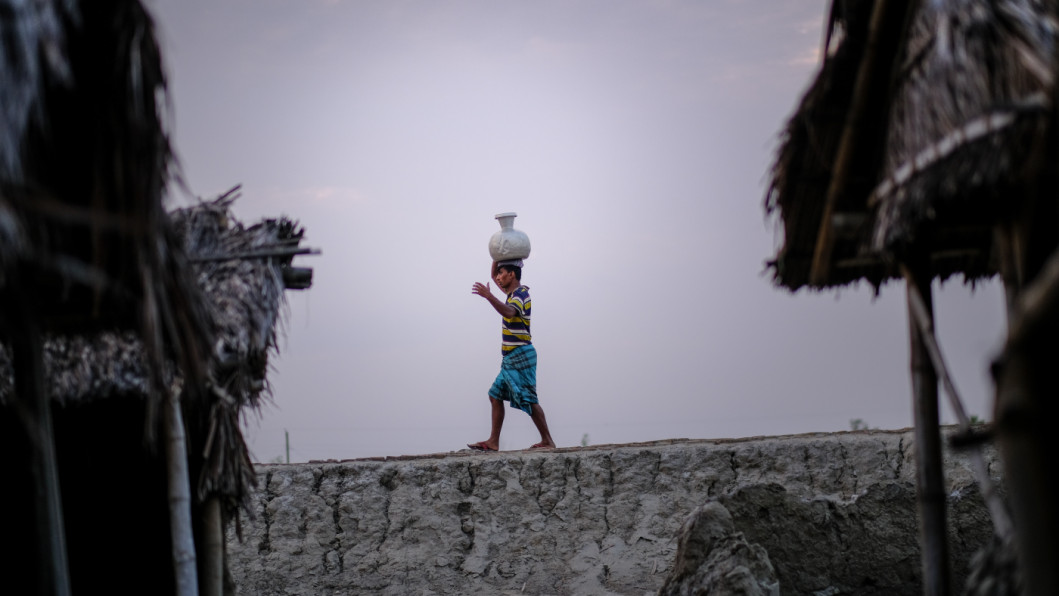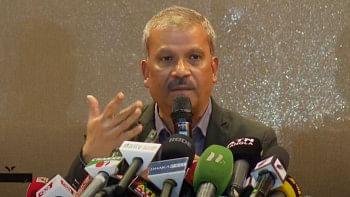A holistic approach towards climate change and well-being

In the context of climate change, buzzwords like sustainable development, adaptation, resilience, vulnerabilities, and green skills always remain on top of our discourse. While the concepts are separate – addressing different, sometimes overlapping agendas – all of these can be grouped under a single agenda of achieving human and environmental welfare. Although there is still much to do, Bangladesh is making steady progress. That being said, working for the well-being of climate vulnerable communities has never been easy as their problems are multifaceted and complex. The vulnerabilities of these communities are not limited to their exposure to climate change only, but further constrained by the dire lack of basic needs. For an exposition, let's look into Gabura, a hotspot for climate change research and interventions.
Gabura is a remote union of Shyamnagar upazila in the Satkhira district located on the southern coast of Bangladesh. It is widely known to both national and international stakeholders for its exposure to frequent cyclones, storm surges, floods, erosion, and salinity intrusion. Such extreme events severely affect the social-ecological systems of the communities, resulting in huge losses and damages. Moreover, the stressors that further intensify their existing problems of basic facilities – such as lack of freshwater, adequate healthcare and hygienic sanitation, and limited livelihood opportunities – are the key challenge that needs to be addressed.
Several factors must be taken into consideration while developing a sustainable model for providing solutions to communities. They include: interconnectedness of issues; people's overdependence on natural resources; unpredictable nature of disasters; lack of technological innovations and skilled human resources; lack of community awareness; and remote geographic locations. They all contribute to the complexities and challenges of working in Gabura and similar places across the country. So, what are the present approaches to address the issues, and what outcomes do they bring?
It is perhaps because of the complexities of the problems that, so far, most intervention approaches have been segregated in nature, targeting segregated problems of the vulnerable communities. Again, if we look at the case of Gabura, we see that plenty of interventions are ongoing to support its communities. There are at least 10 NGOs operating in Gabura for the welfare of its people and the environment. NGO programmes in this region focus on specific beneficiary groups, with specific intervention needs such as freshwater accessibility, healthcare, livestock rearing, livelihood, and others.
Though some programmes are developing a particular aspect of a beneficiary group, such as livelihood training, in most cases the beneficiary groups miss other intervention facilities (from the same or any other NGOs) needed to ensure their overall well-being. Moreover, because the issues are interconnected, these drawbacks also challenge the sustainability of the particular interventions they receive. For example, a beneficiary group that has received rainwater harvesting tanks is likely to lose the credibility of maintaining it if their need for income opportunities remains unaddressed.
Overall, such drawbacks elucidate good reasons as to why development projects in Gabura have not yielded significant progress yet. In 2022, a baseline survey conducted by the SAJIDA Foundation found that 89 percent out of 313 people surveyed in Gabura consider available healthcare facilities inadequate, and 59 percent depend on rainwater as a primary source of drinking water, while also reporting that they were not able to meet their economic needs with their present limited livelihood options.
However, Gabura is not the only such vulnerable place; there are many other places facing distress from climate risk. Nevertheless, Gabura's dire situation, even after numerous ongoing interventions, is enough to induce the scale of distress faced by other vulnerable locations across the country that remain out of focus. Since our present segregated approaches, to some extent, lack efficiency to achieve long-lasting transformational change, a unique holistic approach should be our way forward to work in the vulnerable regions of the country.
A holistic approach should address all the necessities of a region in an integrated manner, so that the target population becomes more resilient and self-sufficient in respect to their social, economic and environmental domains – the three pillars of sustainability. A successful intervention should work in alignment with: 1) The social pillar (by ensuring well-being through physical and mental healthcare, and access to freshwater sources); 2) The environmental pillar (by training people on nature-based solutions and green skills); and 3) The economic pillar (focusing on livelihood and skills development programmes in climate vulnerable communities). It should ensure community well-being and play an important role in addressing climate change with its interventions like nature-based solutions (NbS), green skills and livelihoods. The long-term viability of the programme and the overall community welfare and resilience would improve because their interconnected problems would be addressed parallelly.
Working for community development is a dynamic and evolving process. As we advance and gain deeper understanding from our development and intervention strategies, we should also stay open to adopting and trying new approaches as needed.
Through productive discussions, we should build on our existing knowledge and experience, and identify leverage points to work efficiently. At this point, as a way forward to achieve our well-being, we should become innovative and follow more comprehensive and integrated strategies while working for the betterment of the vulnerable communities in Bangladesh.
Dr Samiya Ahmed Selim is adviser at the Climate Change and Disaster Management (CCDM) unit of SAJIDA Foundation. E-mail: dr.samiya@sajida.org
Mohammad Budrudzaman is research assistant at the Research Department of SAJIDA Foundation. E-mail: mohammad.budrudzaman@gmail.com



 For all latest news, follow The Daily Star's Google News channel.
For all latest news, follow The Daily Star's Google News channel. 







Comments